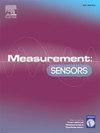Deep learning for liver evaluation: A comprehensive review and implications for ulcerative colitis detection
Q4 Engineering
引用次数: 0
Abstract
This review explores the applications of deep learning based computer-aided diagnosis (DL-CAD) systems when evaluating liver images derived from Computed Tomography (CT) scans. It highlights the ability of contemporary state of the art deep learning frameworks such as Convolutional Neural Networks (CNNs) and UNets, to automate the liver lesions segmentation and classification with great accuracy. The analysis further expands on the relationship that existed between some systemic illnesses such as ulcerative colitis (UC) and specific liver related conditions such as Primary Sclerosing Cholangitis, fatty liver and autoimmune hepatitis. The above conditions which are frequently present in UC patients once again underpin the importance of imaging techniques in the provision of appropriate and timely treatment. Our research shows that the DL-CAD system may be modified appropriately in order to identify liver changes caused by UC which has advantages in diagnosis without overburdening radiologists. Furthermore, the inclusion of wearable devices for periodic liver evaluation further supports the concept of personalized patient management. Hence, this study includes notable improvements in the analysis of liver lesions and their complications in UC patients with respect to the clinical practice and treatment results.
肝脏评估的深度学习:溃疡性结肠炎检测的全面回顾和意义
本文探讨了基于深度学习的计算机辅助诊断(DL-CAD)系统在评估计算机断层扫描(CT)所得肝脏图像时的应用。它突出了当代最先进的深度学习框架(如卷积神经网络(cnn)和UNets)的能力,可以非常准确地自动分割和分类肝脏病变。该分析进一步扩展了一些全身性疾病如溃疡性结肠炎(UC)与特定肝脏相关疾病如原发性硬化性胆管炎、脂肪肝和自身免疫性肝炎之间存在的关系。上述情况在UC患者中经常出现,再次证明了成像技术在提供适当和及时治疗方面的重要性。我们的研究表明,DL-CAD系统可以适当修改,以识别由UC引起的肝脏变化,这在诊断方面具有优势,而不会给放射科医生带来过重的负担。此外,纳入可穿戴设备进行定期肝脏评估进一步支持个性化患者管理的概念。因此,本研究在UC患者肝脏病变及其并发症的分析方面,在临床实践和治疗结果方面有了显著的改进。
本文章由计算机程序翻译,如有差异,请以英文原文为准。
求助全文
约1分钟内获得全文
求助全文
来源期刊

Measurement Sensors
Engineering-Industrial and Manufacturing Engineering
CiteScore
3.10
自引率
0.00%
发文量
184
审稿时长
56 days
 求助内容:
求助内容: 应助结果提醒方式:
应助结果提醒方式:


